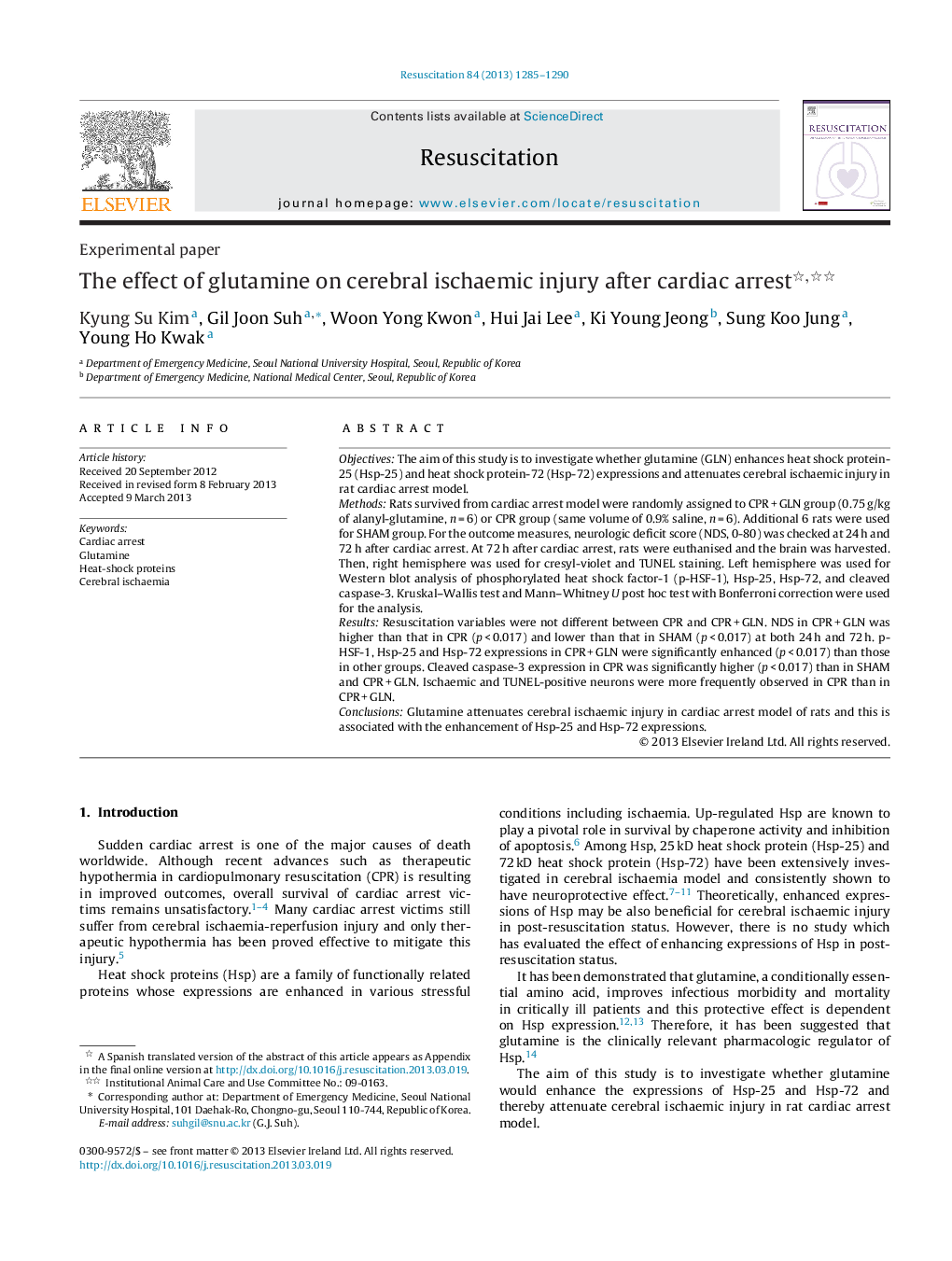| Article ID | Journal | Published Year | Pages | File Type |
|---|---|---|---|---|
| 3008700 | Resuscitation | 2013 | 6 Pages |
ObjectivesThe aim of this study is to investigate whether glutamine (GLN) enhances heat shock protein-25 (Hsp-25) and heat shock protein-72 (Hsp-72) expressions and attenuates cerebral ischaemic injury in rat cardiac arrest model.MethodsRats survived from cardiac arrest model were randomly assigned to CPR + GLN group (0.75 g/kg of alanyl-glutamine, n = 6) or CPR group (same volume of 0.9% saline, n = 6). Additional 6 rats were used for SHAM group. For the outcome measures, neurologic deficit score (NDS, 0-80) was checked at 24 h and 72 h after cardiac arrest. At 72 h after cardiac arrest, rats were euthanised and the brain was harvested. Then, right hemisphere was used for cresyl-violet and TUNEL staining. Left hemisphere was used for Western blot analysis of phosphorylated heat shock factor-1 (p-HSF-1), Hsp-25, Hsp-72, and cleaved caspase-3. Kruskal–Wallis test and Mann–Whitney U post hoc test with Bonferroni correction were used for the analysis.ResultsResuscitation variables were not different between CPR and CPR + GLN. NDS in CPR + GLN was higher than that in CPR (p < 0.017) and lower than that in SHAM (p < 0.017) at both 24 h and 72 h. p-HSF-1, Hsp-25 and Hsp-72 expressions in CPR + GLN were significantly enhanced (p < 0.017) than those in other groups. Cleaved caspase-3 expression in CPR was significantly higher (p < 0.017) than in SHAM and CPR + GLN. Ischaemic and TUNEL-positive neurons were more frequently observed in CPR than in CPR + GLN.ConclusionsGlutamine attenuates cerebral ischaemic injury in cardiac arrest model of rats and this is associated with the enhancement of Hsp-25 and Hsp-72 expressions.
